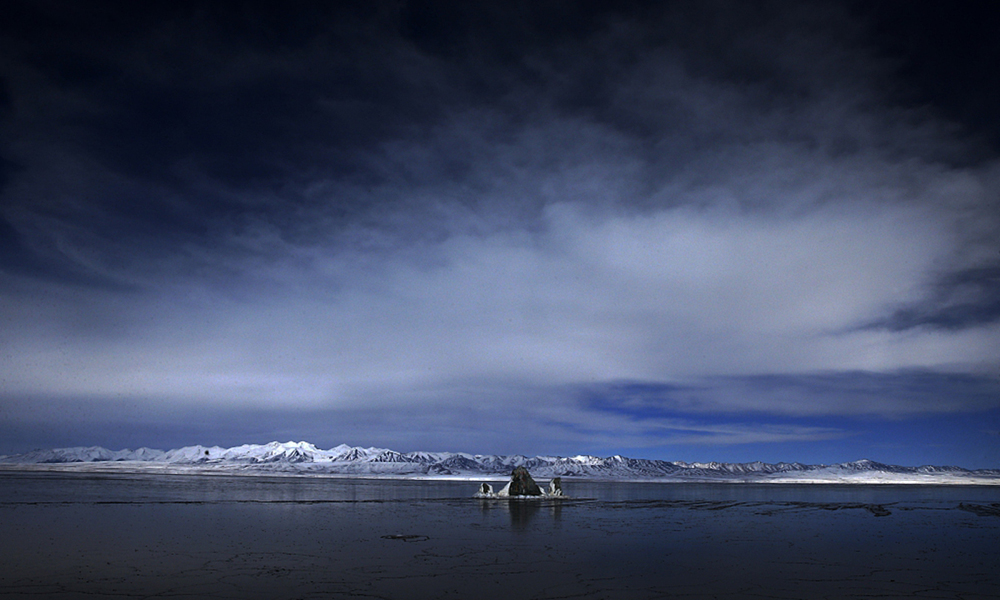Qinghai-Tibet Plateau summer rainfall for the next two to 10 years can be predicted by climate models, according to a new study by Chinese scientists, revealing the predictability of decadal variations of the plateau's summer rainfall for the first time.
Halahu lake on Qinghai-Tibet Plateau Photo: CFP
Chinese scientists are also working on predicting the average summer rainfall of the Himalayan region in the next 10 years using climate models, and will share the data with South Asian nations including India for reference and preparations for possible extreme climate events.
The study, conducted by scientists from the Chinese Academy of Sciences, used large ensembles from an international archive of comprehensive decadal prediction experiments based on the diverse climate models to eliminate unpredictable noise and extract predictable signals of the plateau summer rainfall. It revealed that the Qinghai-Tibet Plateau summer rainfall could be predicted for the next two to 10 years, Zhou Tianjun, corresponding author of the paper and a scientist at the Institute of Atmospheric Physics in the Chinese Academy of Sciences, told the Global Times on Wednesday.
The related study was published in the scientific journal
Science Advances on Wednesday.
At present, the scenario-based long-term projection of rainfall on the Qinghai-Tibet Plateau can be predicted internationally, such as in the next 50 to 100 years, but not in the near term, such as two to 10 years, Zhou said.
The researchers revealed that the hinterland of the Qinghai-Tibet Plateau will become wetter, with a 12.8 percent increase in summer rainfall during 2020-2027 compared to 1986-2005, Zhou said.
The study provides an important reference for water resources management in surrounding areas and adaptation response to the risks of climate change on the Qinghai-Tibet Plateau, according to Zhou.
Dubbed "Asia's water tower," the Qinghai-Tibet Plateau and its surrounding mountains are the source of more than 10 major rivers in Asia, including the Ganges and Yangtze River, and provide water sources for 40 percent of the world's population.
Zhou said that Chinese scientists, together with international communities, are also working on research to predict the interannual to near term decadal change of rainfall of the Himalayan region. If reliable, these predictions could provide a reference for South Asian countries including India to respond to possible extreme climate events.

